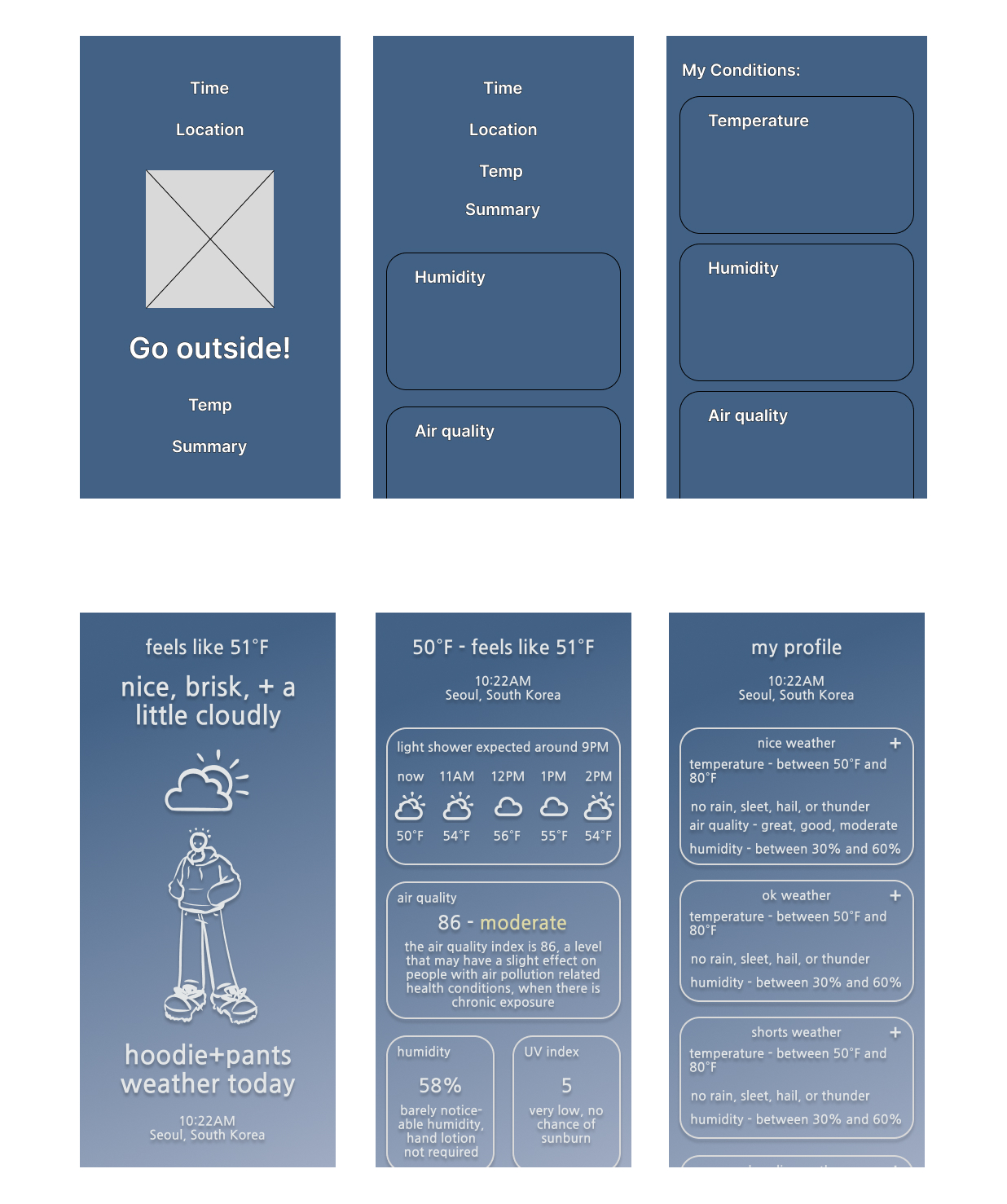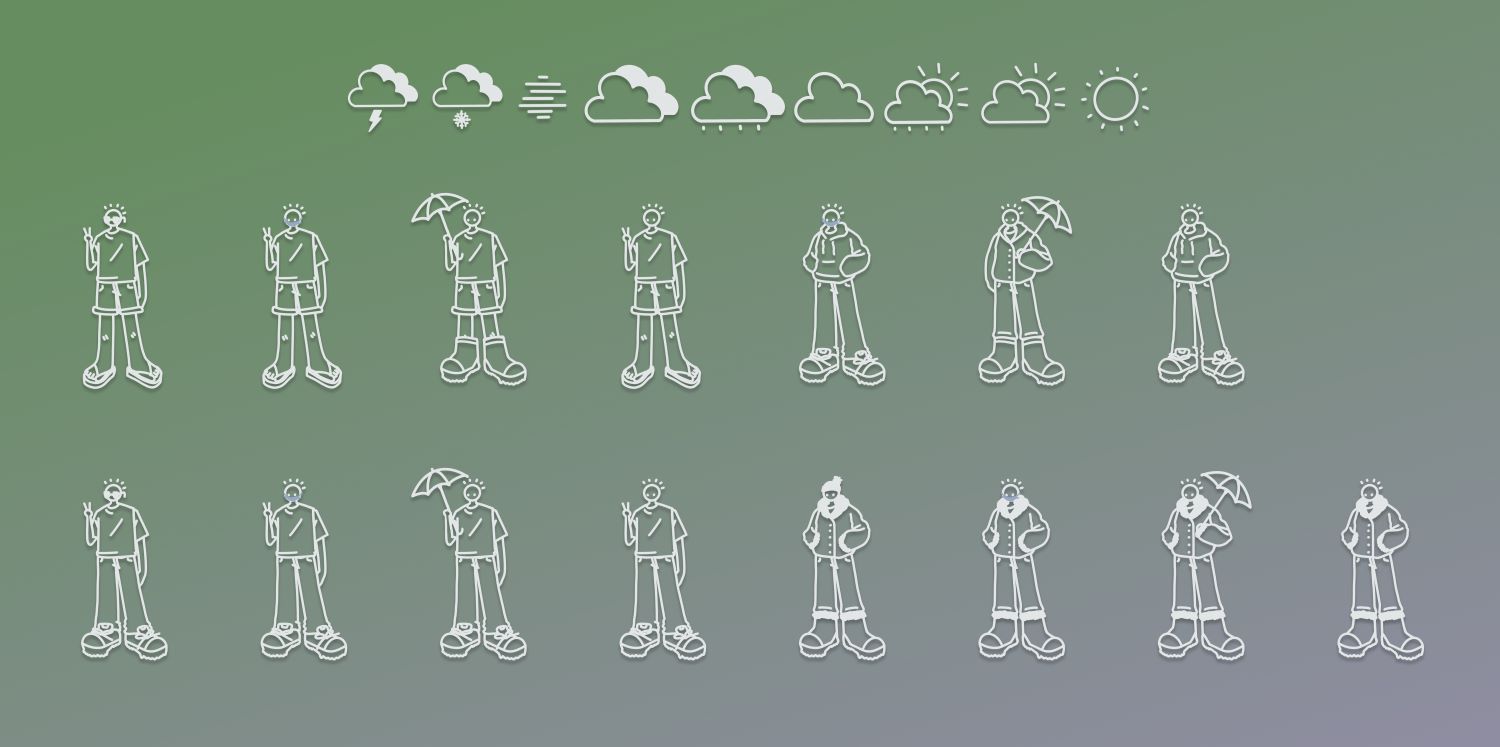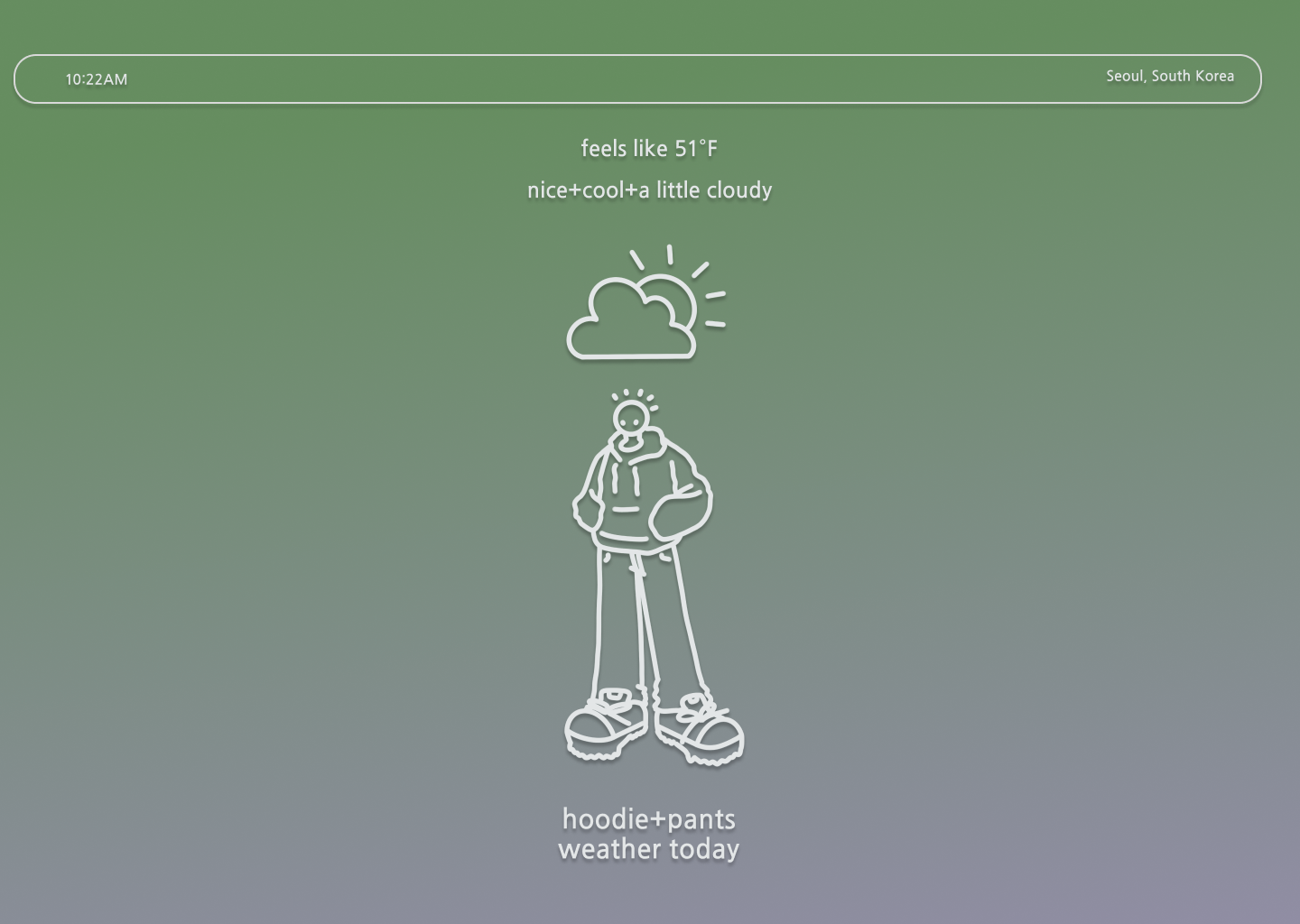Based on this sitemap, I created some digital sketches to
visualize the app's look and structure, emphasizing a clean
design with a prominent personalized weather verdict.
As I struggled to find available weather and outfit graphics to
use on the home page, I decided to draw them myself to fit the
niche requirements and craft a unique aesthetic.
I presented this design draft to my peers and instructors, walking
through how I envisioned the users would interact with the app. I
was looking for feedback on the app's navigation, visual
design, and overall usability, and these were some of the key
critiques I received:
Unclear Navigation
"It's not intuitive to click on the character to
access the profile, or the weather icon to access
details."
Feature Suggestion
"Some users may benefit from a map interface."
Color Encoding
"Why were these colors chosen, and could they be used
more intentionally?"
I addressed most of the feedback received on my rough draft in
this iteration.
Navigation links were added to
clarify access to the profile and weather details pages, and a
map interface was created for
users who prefer visual representations.
I also developed a system of color encoding, to be used both in the
sliding selectors on the settings page and to generate a
weather-specific background gradient.
"It would be nice to allow the flexibility to modify or
add locations"
"The possible customization interactions on the profile
page are difficult to understand"
"How would users explore additional weather details
within the app, such as weekly forecasts?"





